Amazing places to explore the world's ancient civilisations
The rest is history
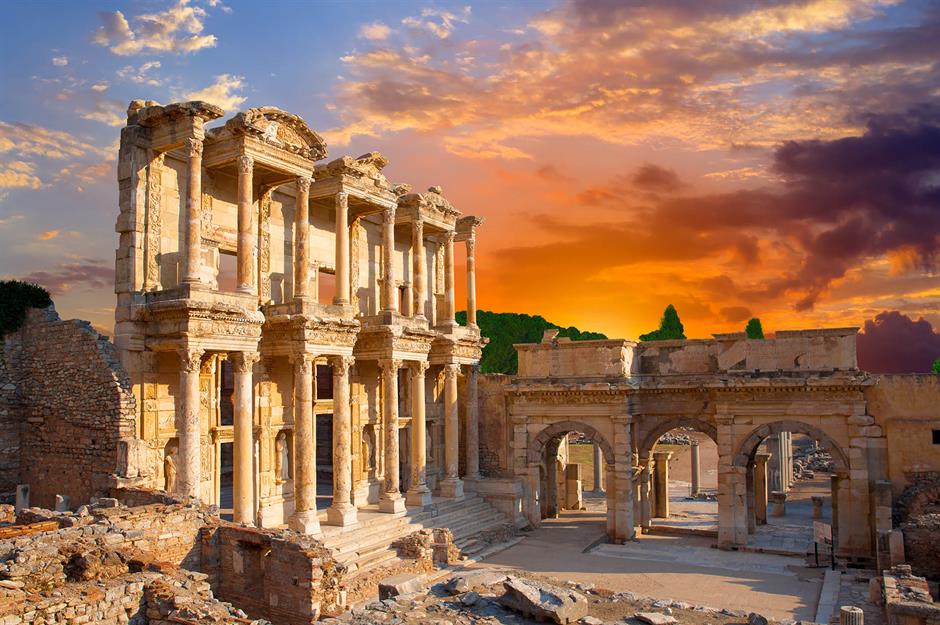
Take a walk back in time to discover some of the world’s most incredible ancient monuments and cities that were once home to mighty and fascinating civilisations. From Italy to Iran, Egypt to England (plus many more), these countries boast splendours of the past that you can visit in the present.
Read on to discover some of the top spots around the globe for history lovers...
Rome, Italy
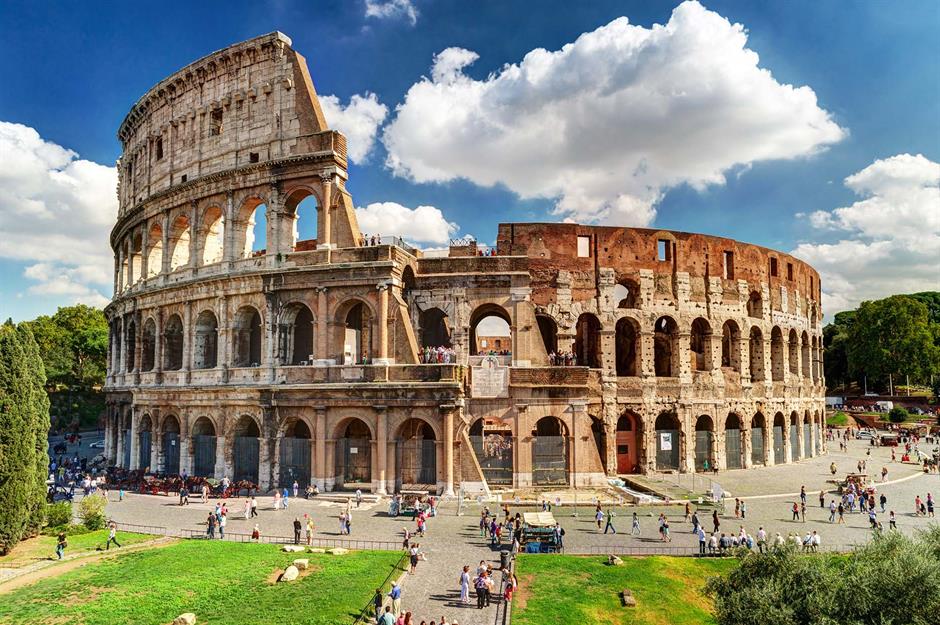
As the capital of the Roman Empire, Rome is a veritable treasure trove of ancient riches. One of its most recognisable landmarks is the mighty Colosseum. The amazingly well-preserved amphitheatre was built between AD 70-80 to host games, gladiator tournaments and public spectacles. Walk around the ancient arena and picture the powerful emperors and thousands of spectators cheering. Another of the city’s star sights is the Pantheon, a temple originally constructed between 25 and 27 BC and then reconstructed over seven years from AD 118 by the emperor Hadrian.
Rome, Italy
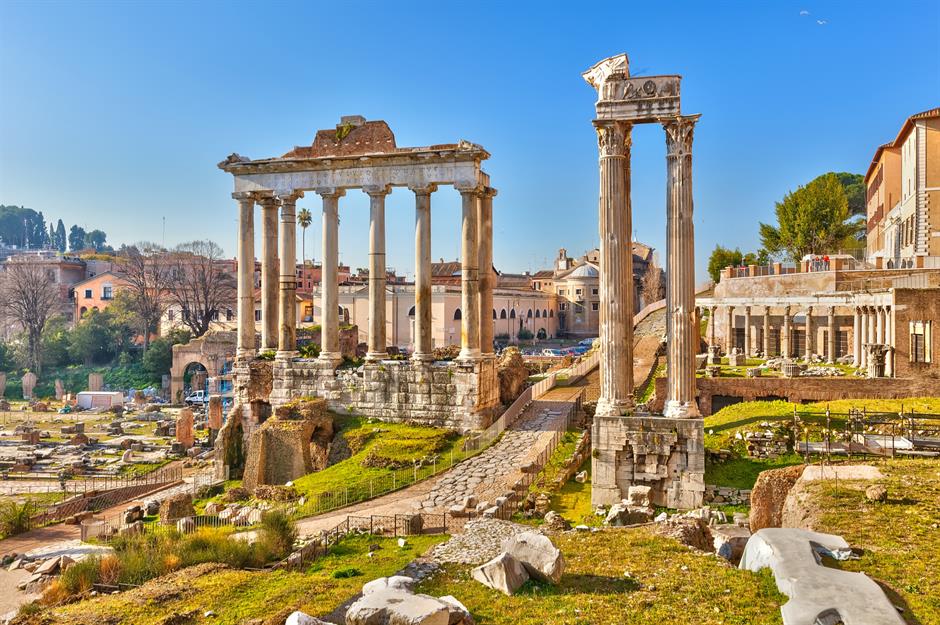
Right next to the Colosseum lies the remains of the Roman Forum, the centre of ancient Rome’s public and political life. The vast and atmospheric complex contains temples (including the Temple of Saturn and the Temple of Vesta), squares and numerous arches (including the grand Arch of Septimius Severus, dedicated to the emperor’s victories in Asia Minor in the 2nd century AD). Be sure to spend at least a day exploring to get a handle on the site's incredible history.
Rome, Italy
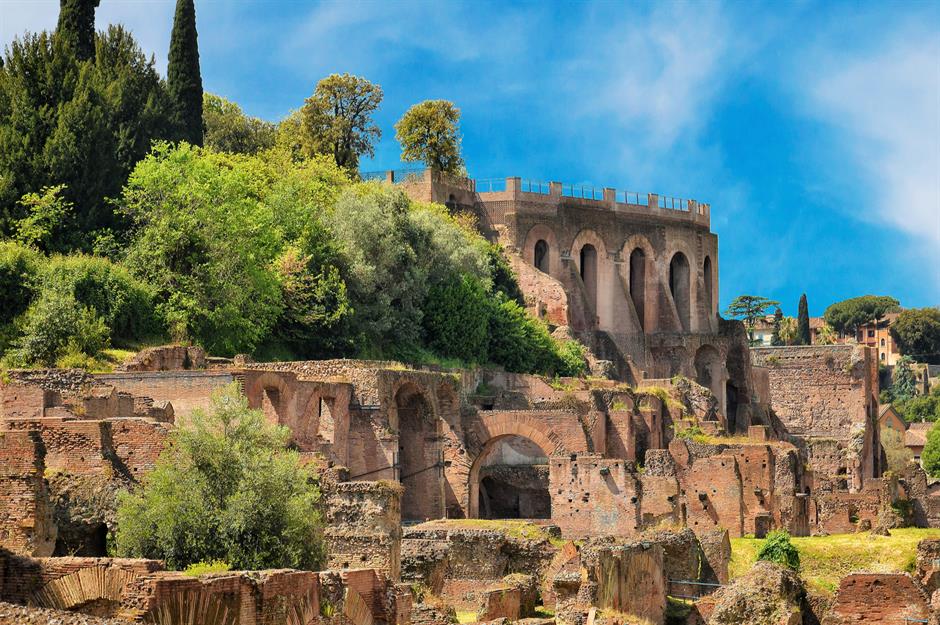
Look up from the forum and you’ll see Palatine Hill, one of the city’s most ancient places. It's supposedly where Romulus and Remus, legendary founders of Rome, were found and raised by the she-wolf. As well as fantastic views over the forum and city, Palatine Hill has some of the city’s most important archaeological ruins including temples, villas and palaces. It's where many emperors and wealthy Romans resided.
Love this? Follow our Facebook page for more travel inspiration
Athens, Greece
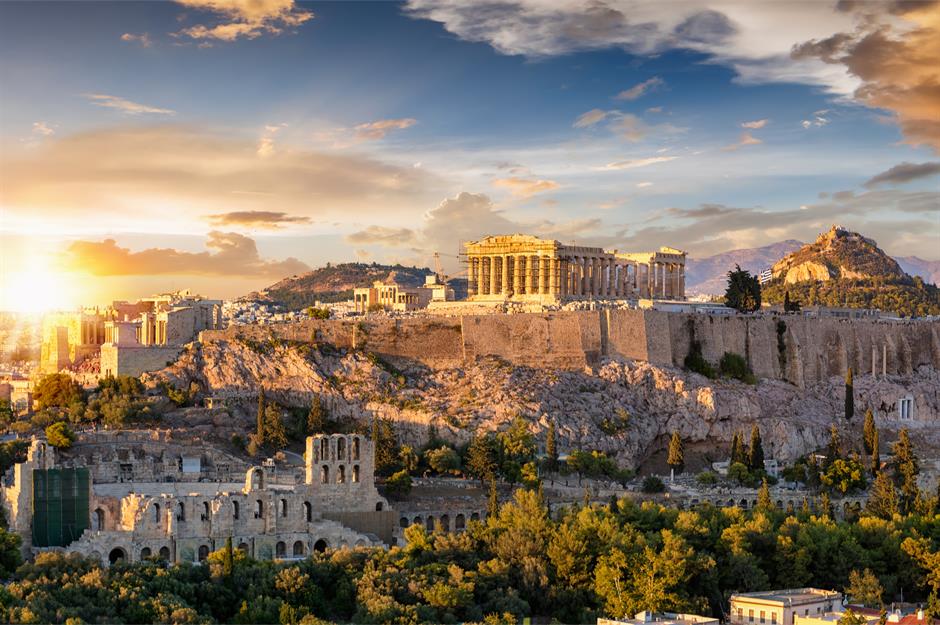
Any exploration of Greece’s astounding history has to start in Athens – the cradle of modern democracy. Head first to the Acropolis, the rocky hill that looms over the city is home to some of antiquity's greatest buildings, including the iconic Parthenon. The Doric temple was one of the first monuments built here when it was constructed between 447 and 438 BC. It was dedicated to Athena Parthenos, the patron of the city.
Athens, Greece
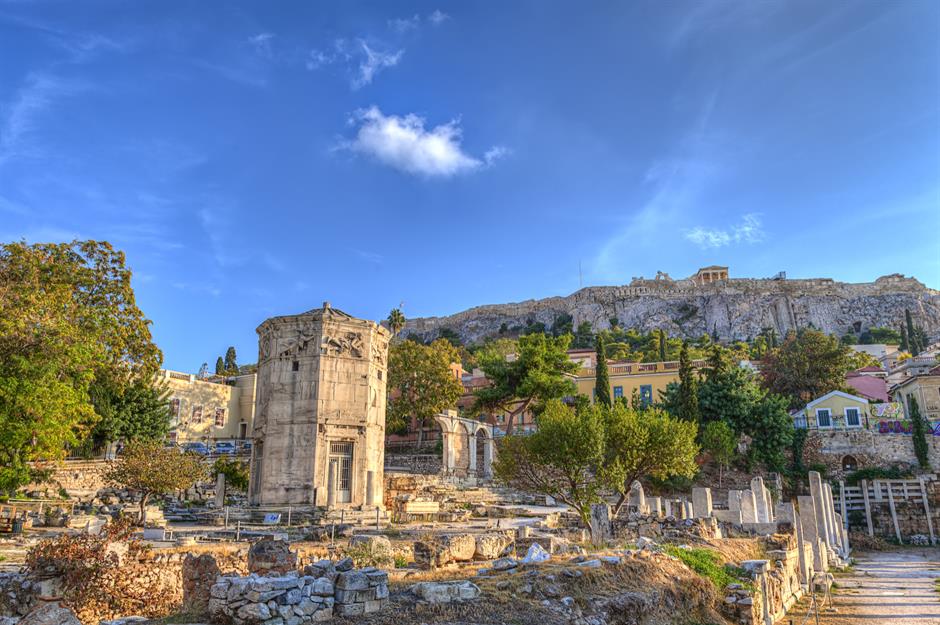
As the central meeting place of ancient Athens, the Agora was where the Athenians' commercial, political and social activity took place. But its history extends beyond that; it's been occupied since the late Neolithic period when it was used as a burial site. Just below the Acropolis, it became a public space in the 6th century BC – philosopher Socrates spoke here. Today, you can see the remains of the Temple of Hephaestus and learn about the city’s far-reaching history at the excellent museum.
Athens, Greece
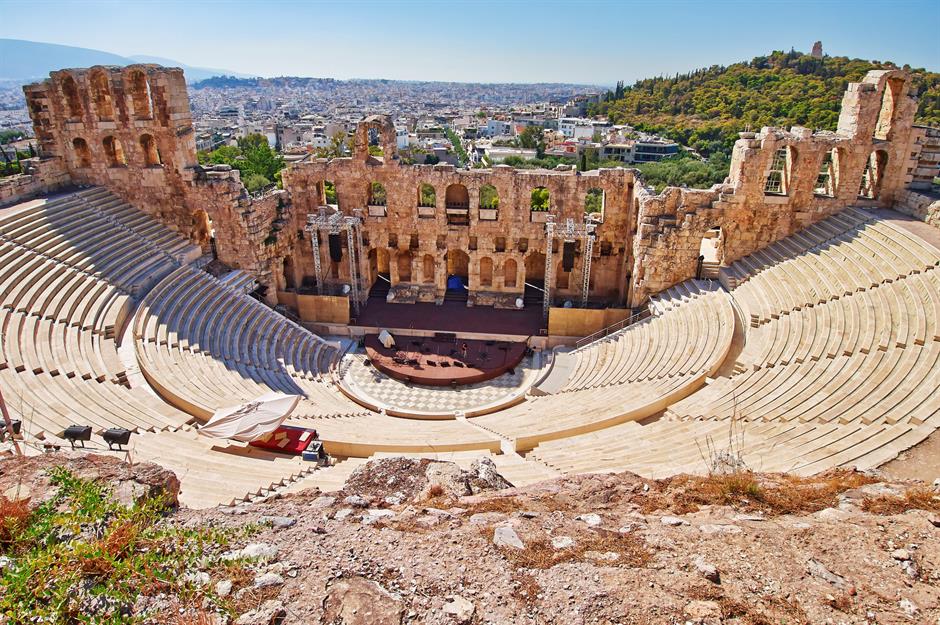
The Greek capital was also the birthplace of theatre and is home to the remains of some of the earliest theatres in existence. The Herodion theatre (pictured) was constructed by Greek nobleman Tiberius Claudius Herod Atticus on the western slopes of the Acropolis in around 161 AD. But the Theatre of Dionysus is even older – in fact, it’s the world's first theatre. Built into the southern cliff in the 6th century BC, the most famous playwrights of the classical era – Aeschylus, Sophocles, Euripides among them – had their works performed here.
Tikal, Guatemala
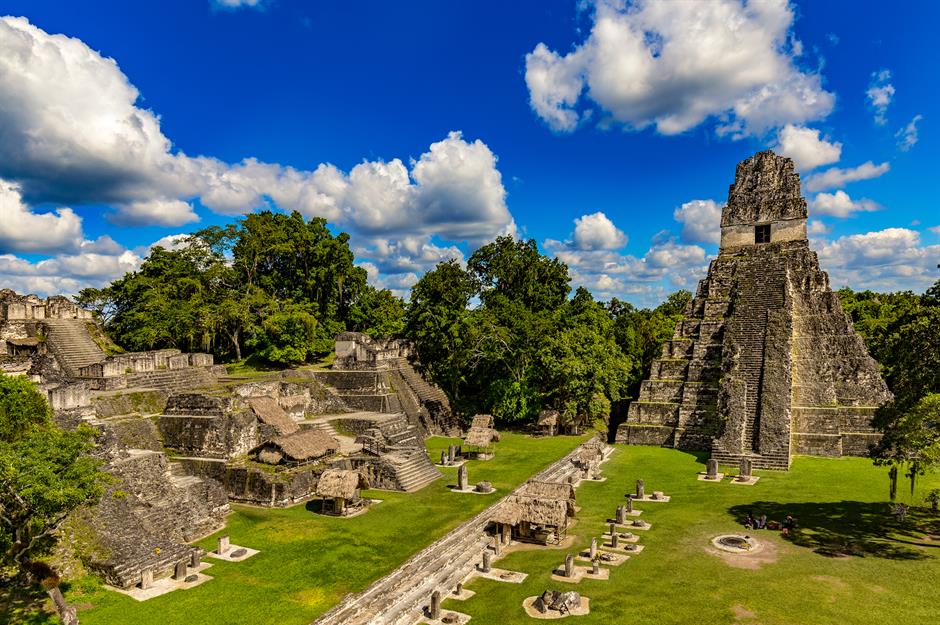
Head to Tikal National Park in northern Guatemala to get to the heart of the country’s enigmatic Mayan Empire. It’s thought a civilisation of around 100,000 Mayans inhabited the dense jungle, building their incredible and intricate structures including temples, palaces and plazas and their famous stone pyramids. The population was at its peak during the eight century, but collapsed just 100 years later, leaving the site abandoned.
Yaxha, Guatemala
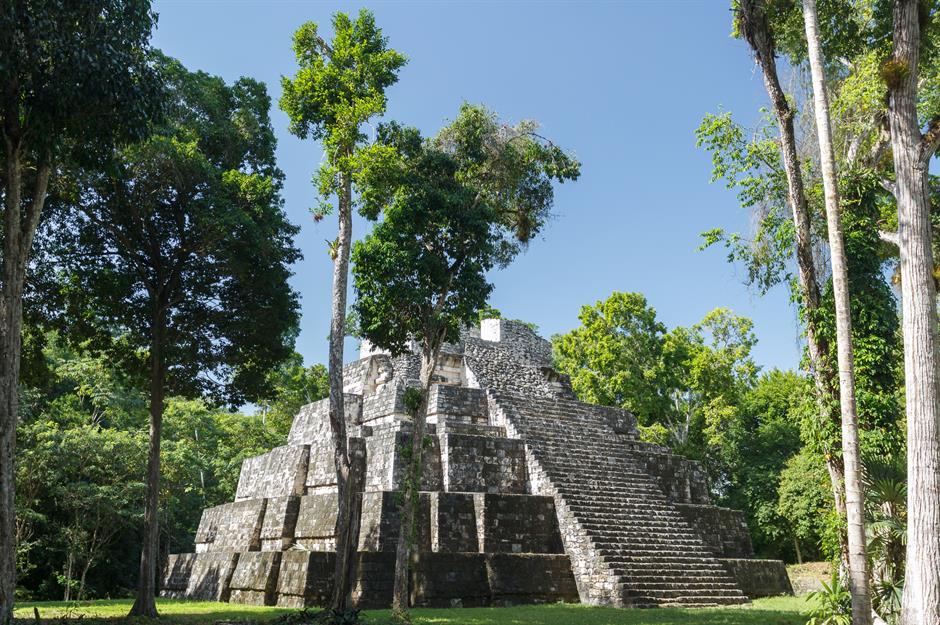
Another of Guatemala’s Mayan must-sees is the ancient city Yaxha, which lies around 20 miles (32km) southeast of Tikal. It’s the country’s third largest ruin and has a spectacular setting deep in the jungle. The site includes hundreds of structures including astronomical observatories (for which the Mayans were especially famous), acropolises and even ball courts. The site has been inhabited since at least 700 BC but was in its prime during the 8th century when its population may have numbered up to 40,000.
Parsa, Iran
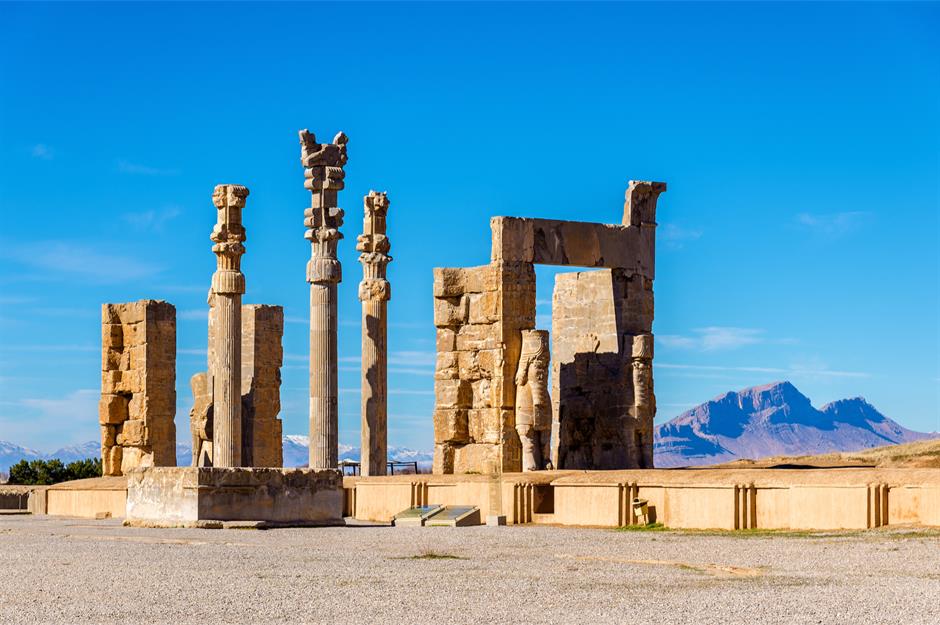
Ancient capital of the kings of the Achaemenid dynasty, the UNESCO World Heritage Site Persepolis is one of the most incredible ancient Persian treasures. Constructed during the rule of King Darius the Great (who reigned 522-486 BC), the city was actually called Parsa. Persepolis is the Greek name meaning Persian City. It was a wealthy and beautiful city, until Alexander the Great sacked and looted it in 330 BC.
Susa, Iran
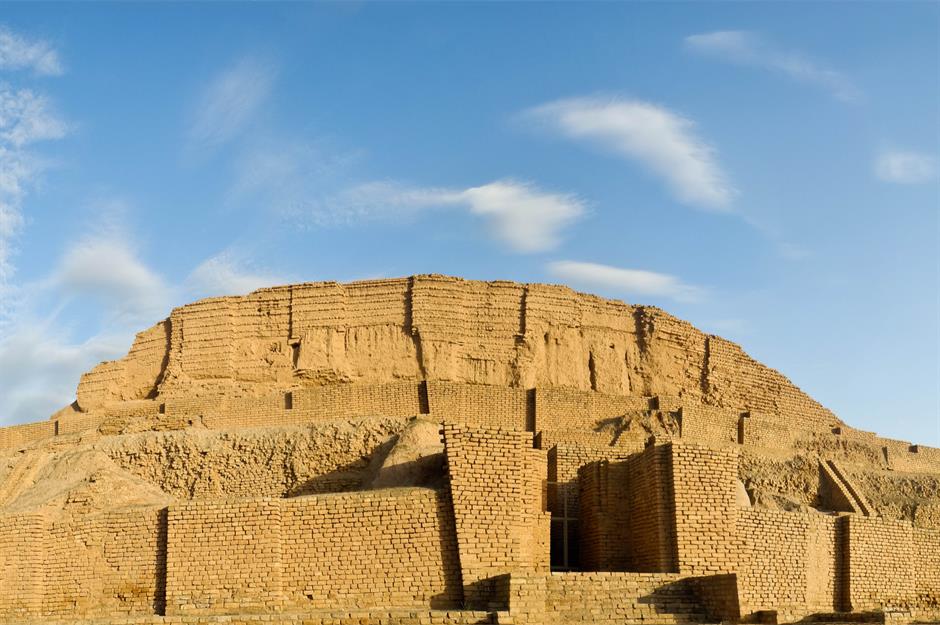
Before the Achaemenid Empire, the ancient Elam civilisation ruled in the far west and southwest of Iran. Their settlements can be dated back to 2700 BC. Their capital was Susa, where archaeological mounds remain, but the ruins of the palace and temple complex Chogha Zanbil or Dur Untash nearby are more impressive. Among the ruins is a striking ziggurat (terraced structure typical of ancient Mesopotamia), temples and three palaces.
Gerasa, Jordan
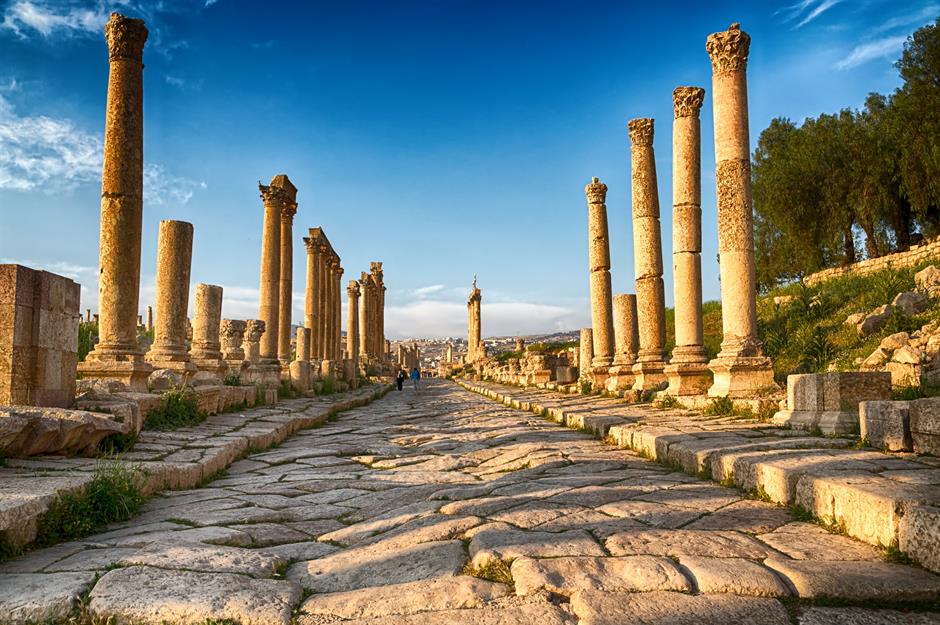
You can almost hear the roar of the crowds and the chariots thundering around the ancient hippodrome of Gerasa, now known as Jerash, as you explore the magnificent ruins of this prosperous Roman outpost in Jordan. In fact you probably can, as the site hosts daily re-enactments of the gladiator fights and chariot races. Gerasa was destroyed by an earthquake in AD 749 but is one of the best preserved Roman cities in the world.
Petra, Jordan
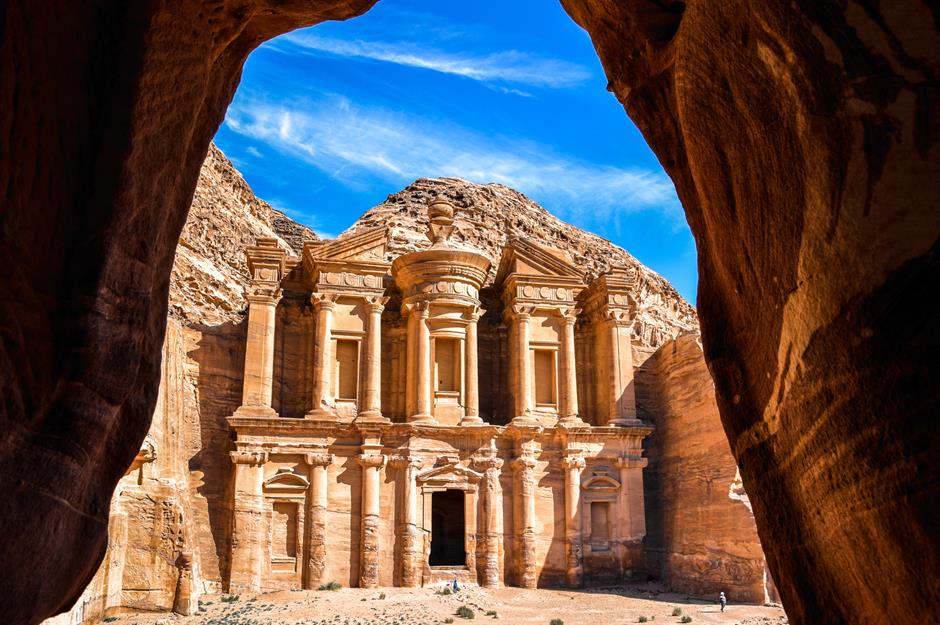
The desert kingdom of Petra is Jordan’s prize treasure and a wonder of the world. Carved into a sheer rock face more than 2,000 years ago by the Nabataeans (a nomadic tribe who eventually settled), it became the capital of their wealthy trade empire with the east and west. The Siq, Treasury, the Colonnaded Street, the High Place of Sacrifice, the Royal Tombs and the Roman theatre are a few highlights of the vast site. When the Nabataean civilisation declined it was taken over by the Romans.
Machu Picchu, Peru
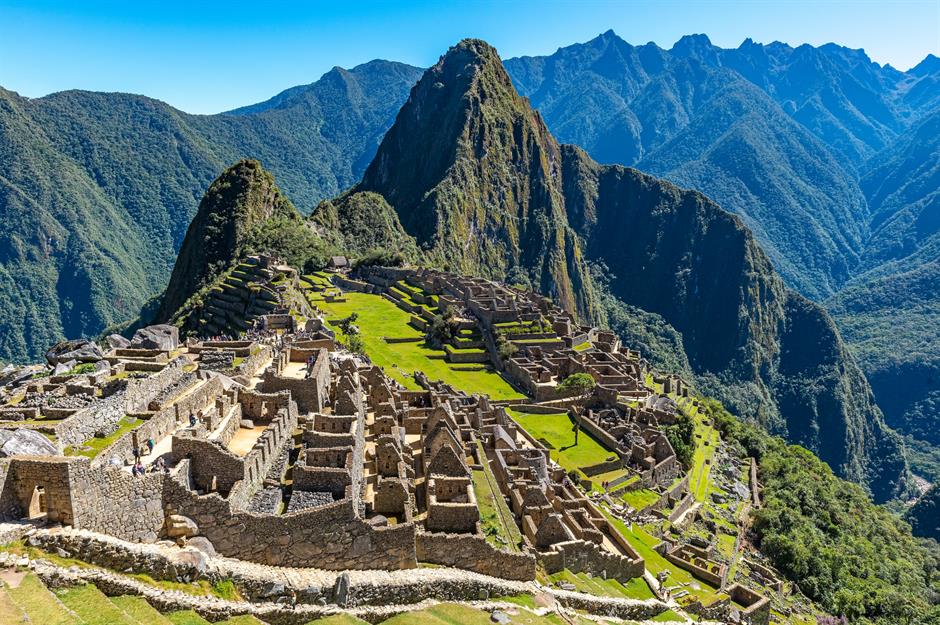
Peru is packed with age-old Inca sites but the most famous of all is the citadel of Machu Picchu, perched high up on a jungle-clad mountain above the Urubamba River. Formerly the centre of an extensive Inca province, the ruins are extensive and breathtaking. The Inca Empire flourished in ancient Peru between 1400 and 1533 and had their seat of power in Cusco. The mighty empire expanded into Argentina, Bolivia, Chile and Ecuador.
Choquequirao, Peru
The nearby ruins of Choquequirao, also in the Sacred Valley or Urubamba Valley, are little-visited but no less impressive than Machu Picchu. The high-altitude Inca settlement, built during the reign of King Pachacuti Inca Yupanqui, sprawls across three hilltops and those who make the arduous hike up can enjoy the ruins in peace. It’s thought by some that this remote centre was the last refuge of the Inca Empire as they fled Cusco in the 16th century.
Ollantaytambo, Peru
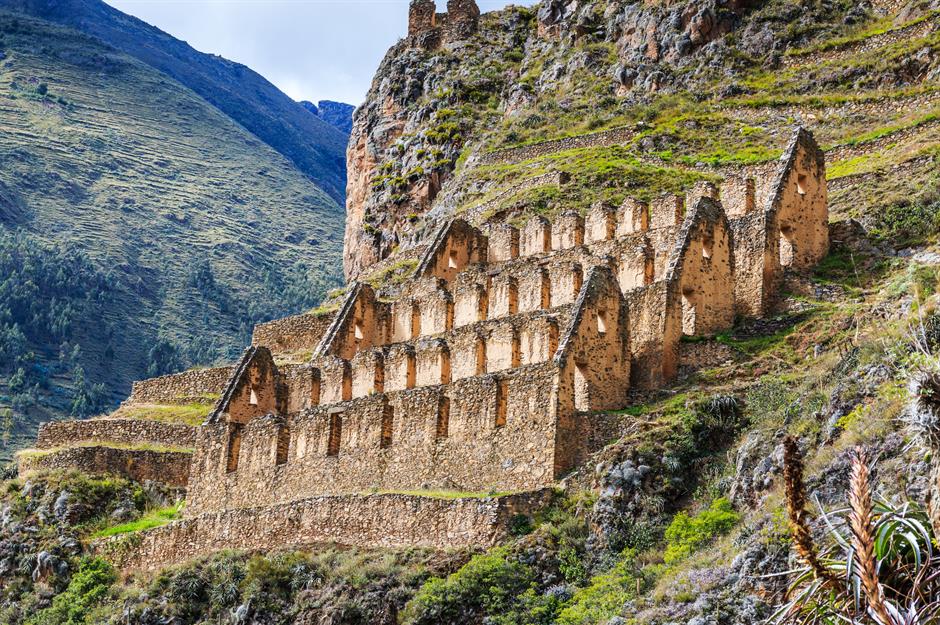
Another of Peru’s best preserved Inca ruins can be found in Ollantaytambo, a religious, political, military and burial complex in the far west of the Sacred Valley. Its temples, fortress and Incan storehouses or ‘Qollqa’, which are built on the Pinkuylluna mountain opposite the ruins, are some of the finest examples of Inca architecture in existence.
Pompeii, Italy
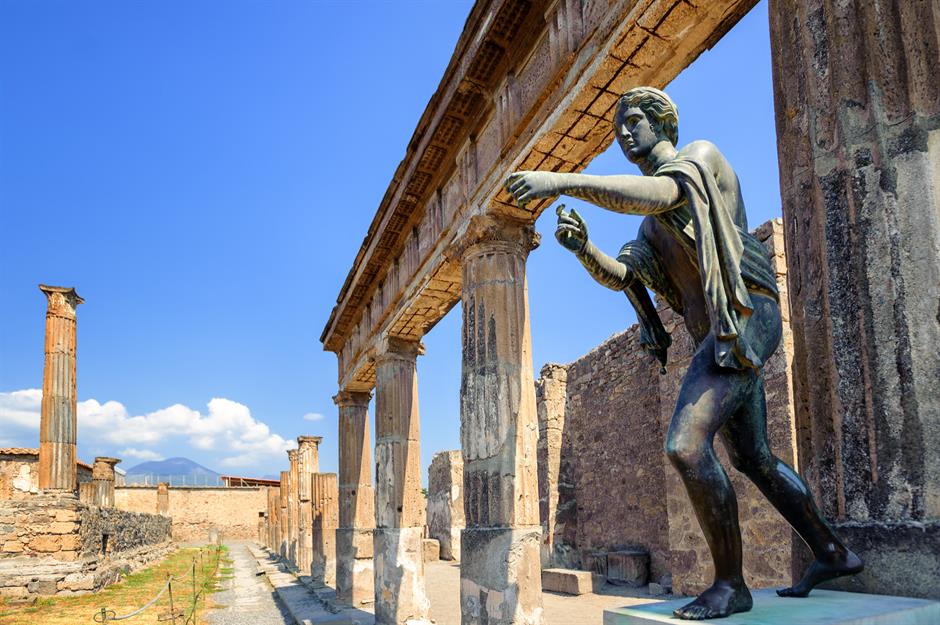
The southern region of Italy is stuffed with archaeological finds and harbours some of the most important sites of antiquity, including the sprawling city of Pompeii, which was devastated by Mount Vesuvius in AD 79 yet tells us so much about the Romans. Buried under ash and debris, its streets, villas, baths, gardens, temples, brothels and amphitheatres give an amazing glimpse into everyday life in the classical age.
Herculaneum, Italy
Another Roman town devastated by the catastrophic eruption is Herculaneum on the Bay of Naples. It's smaller and easier to navigate than Pompeii and as the town was entombed in mud rather than ash, its ruins are even better preserved than those at Pompeii. Wander around the ancient streets and into its villas, baths and temples with their frescoes and mosaics to discover some of the best-preserved Roman-era buildings in the world.
Paestum, Italy

One of the region’s most impressive ancient Greek sites is Paestum, part of Magna Graecia (the area of southern Italy and Sicily that was colonised by the Greeks) and now a UNESCO World Heritage Site. It’s all the more appealing for the lack of crowds, compared with Campania’s major sites, and is known for its three incredible Doric temples, including the Temple of Hera (pictured). This is the oldest building in the settlement that was known as Poseidonia, dating back to the 6th century BC.
Teotihuacan, Mexico
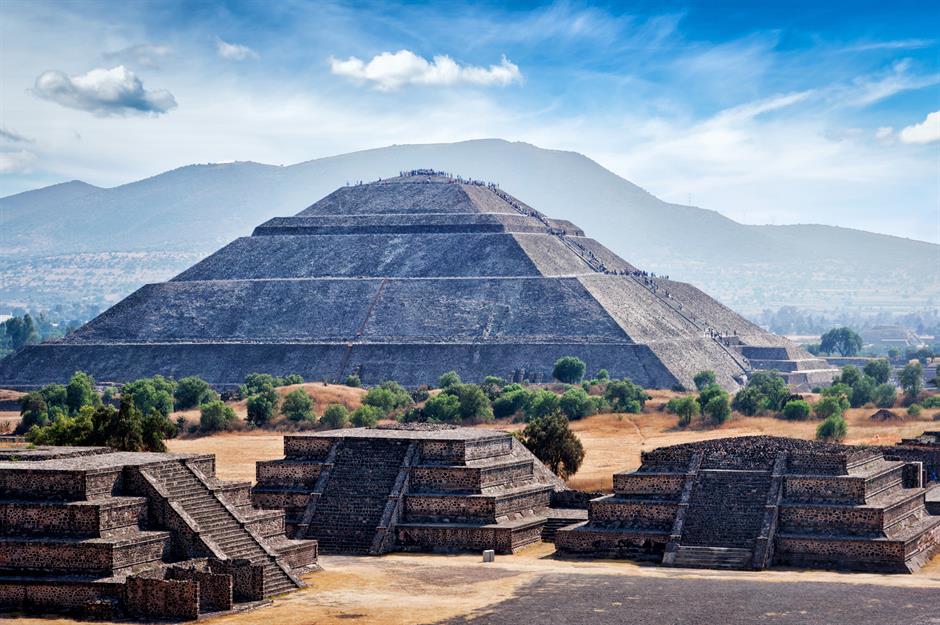
Known as "the place where the gods were created", the Pre-Columbian complex of Teotihuacan is historically the most visited archaeological site in Mexico. The expansive ancient city, with its ruined palaces and grand pyramids, rises majestically from a vast plain. It was home to over 100,000 at its peak. The site, just to the northeast of Mexico City, is shrouded in mystery but it is thought it had a strong influence on the latter-day Aztecs.
El Tajín, Mexico

In its heyday, El Tajín was one of the largest and most important cities of the classic era of Mesoamerica. It rose to prominence after the fall of Teotihuacan and before the rise of the Aztec Empire, from the 9th to the 13th century, and was home to around 20,000 people. Today, the incredible ruins, in the modern-day state of Veracruz, are surprisingly quiet. Those who do venture through the thick jungle will find well-preserved step pyramids, including the magnificent Pyramid of the Niches.
Chichén Itzá, Mexico
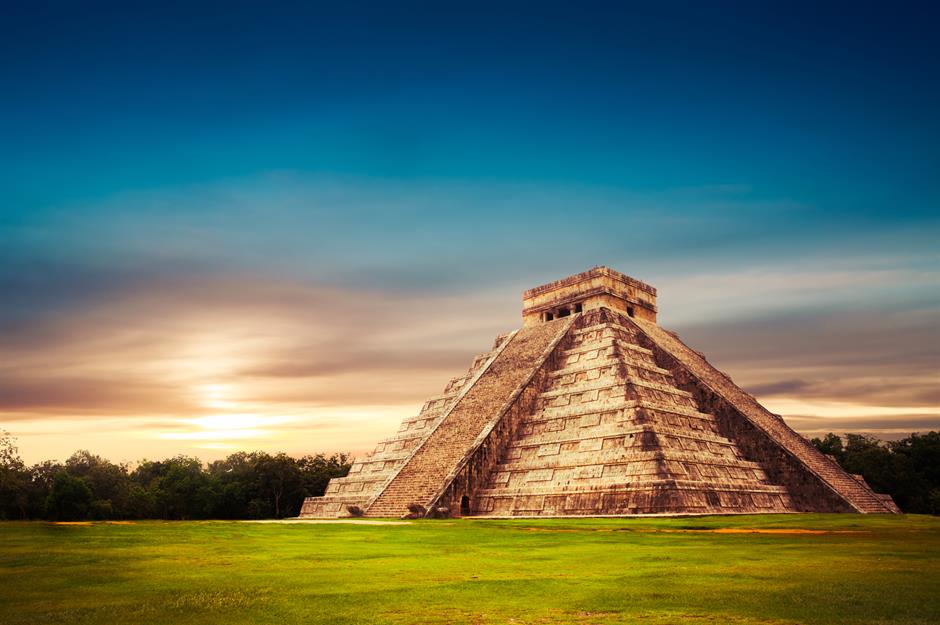
Mexico is also dotted with incredible ancient Mayan sites, including the renowned Chichén Itzá, which is believed to have been founded in the early to mid-5th century. As the political and economic hub of the civilisation between AD 750-1200, its extensive ruins have revealed many secrets of the ancient Mayans, most notably their astounding astronomical, design and mathematical skills. The complex of grand pyramids and temples on the Yucatán Peninsula is also home to the biggest ancient ball court ever found. Other notable Mayan sites are Tulum, Uxmal and Calakmul.
Pyramids of Giza, Egypt
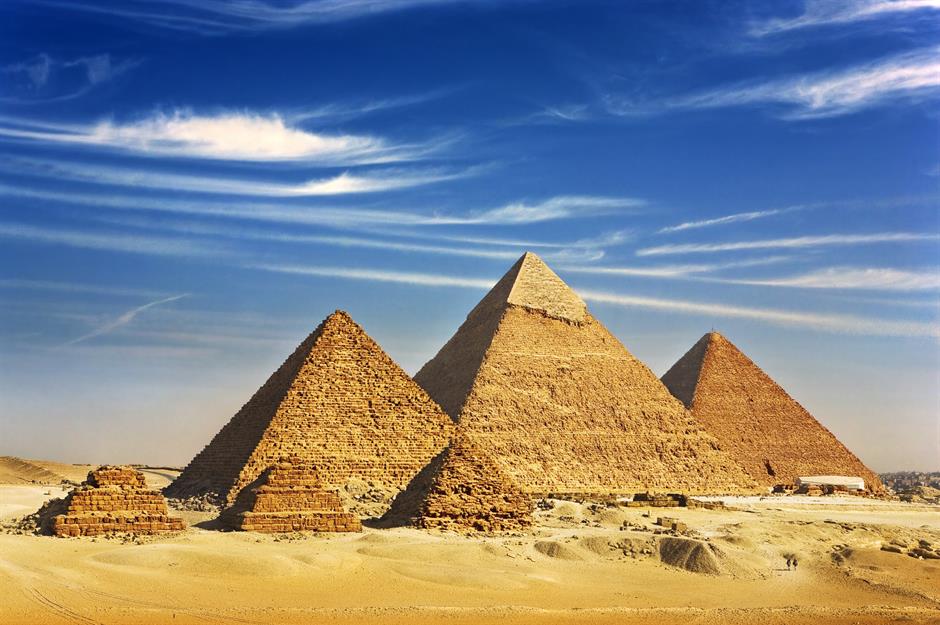
The gigantic pyramids of Giza have stood on the edge of the desert plateau near Cairo for nearly five millennia. The oldest is the Great Pyramid, built around roughly 2550 to 2490 BC to entomb the pharaoh Khufu (Cheops). As the only remaining wonder of the ancient world, the pyramids cannot fail to amaze with their age and scale. To see the treasures of this far-reaching civilisation though, you must visit the Egyptian Museum in central Cairo. It is home to an astonishing collection of ancient Egyptian artefacts.
Luxor, Egypt
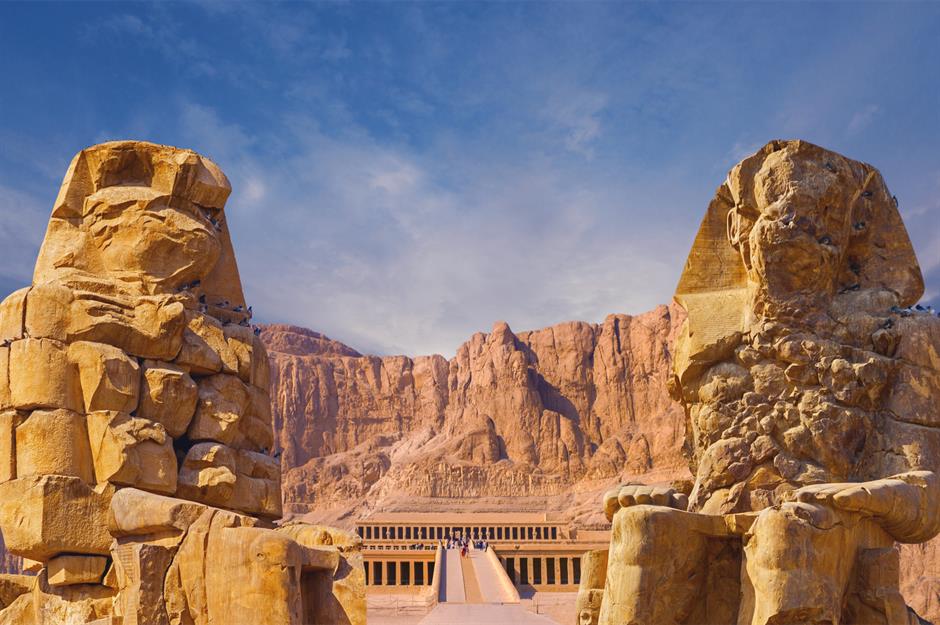
More mind-blowing necropolises and vast temple complexes can be found south along the Nile around Luxor, formerly the ancient city of Thebes. The Valley of the Kings (with tombs including that of boy-pharaoh Tutankhamun) and the Valley of the Queens (built to house the tombs of monarchs' wives and families) lie on the west bank of the Nile. As does the striking Temple of Queen Hatshepsut (pictured) – another must-see.
Karnak, Egypt
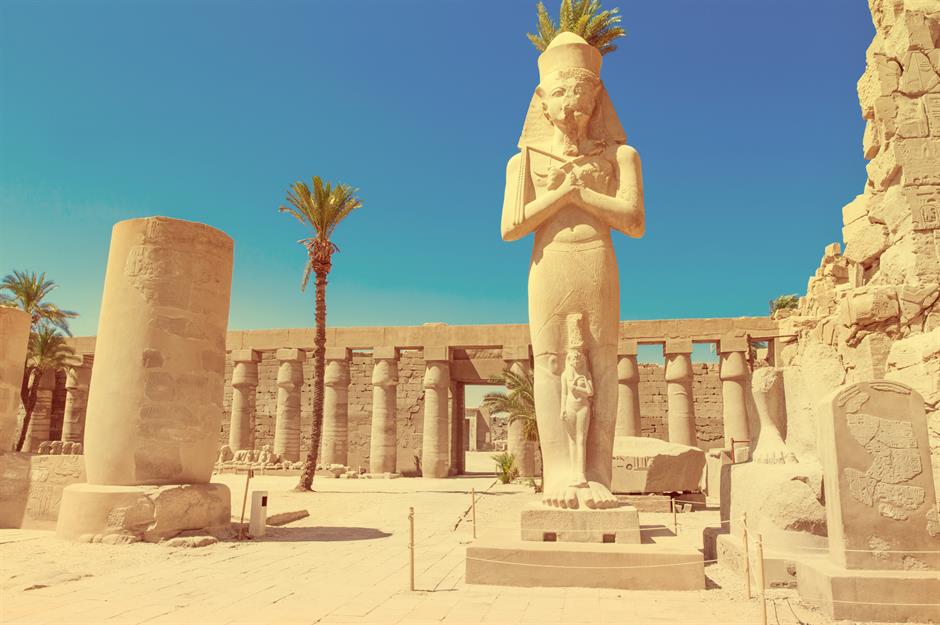
The sheer scale of the Karnak Temple Complex near Luxor is overwhelming. Especially when you consider that the site was created across a period of more than 1,500 years with over 30 pharaohs adding their vision to it. But persevere and you'll reap the rewards – many scholars consider Karnak to be the most impressive ancient site in Egypt. The Temple of Amun, the complex's main structure, is widely believed to be the largest place of worship ever built.
Stonehenge, England
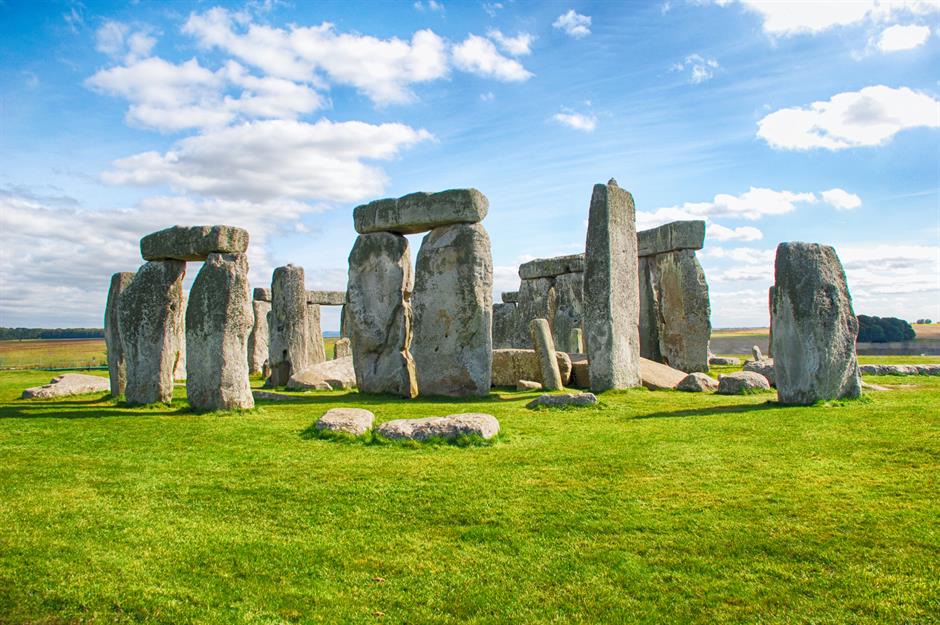
The ancient landscape of Wiltshire in southwest England holds many clues to the history of Britain with its age-old remains. Its most famous prehistoric monument, which has long mesmerised and mystified us, has to be Stonehenge. The precise circles of mighty monoliths are thought to have been erected between 3000 BC and 2000 BC. But exactly why and how they came to be here remains largely a mystery.
Avebury, England
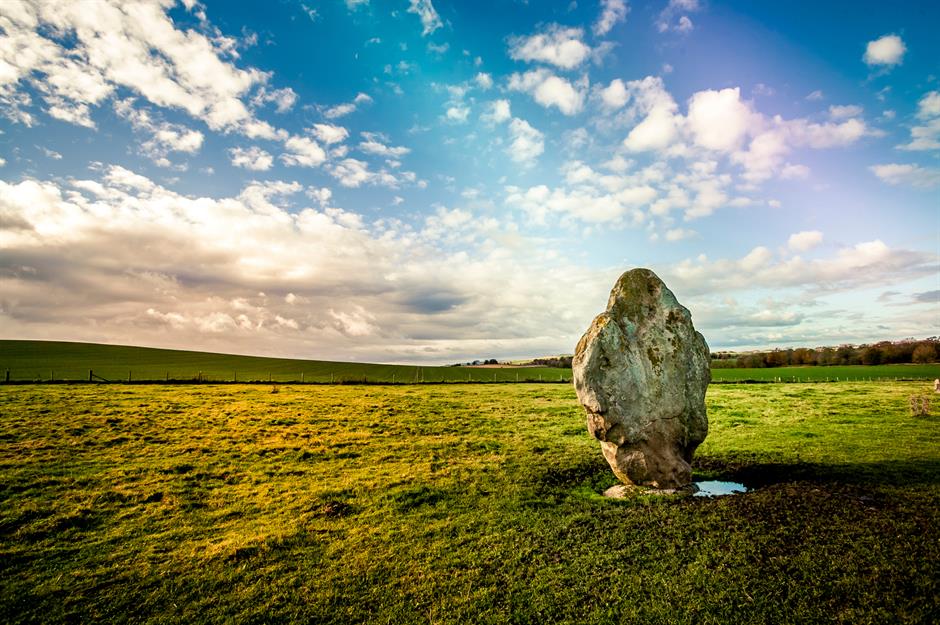
Another of Wiltshire’s numerous archaeological marvels is Avebury, a Neolithic henge that is older and larger than nearby Stonehenge. It includes the largest stone circle in Britain – originally made of around 100 stones. West Kennet Avenue, West Kennet Long Barrow and Silbury Hill are some of the other Neolithic and Bronze Age sites in this part of England that have revealed clues about life and society in prehistoric Britain.
Xi'an, China
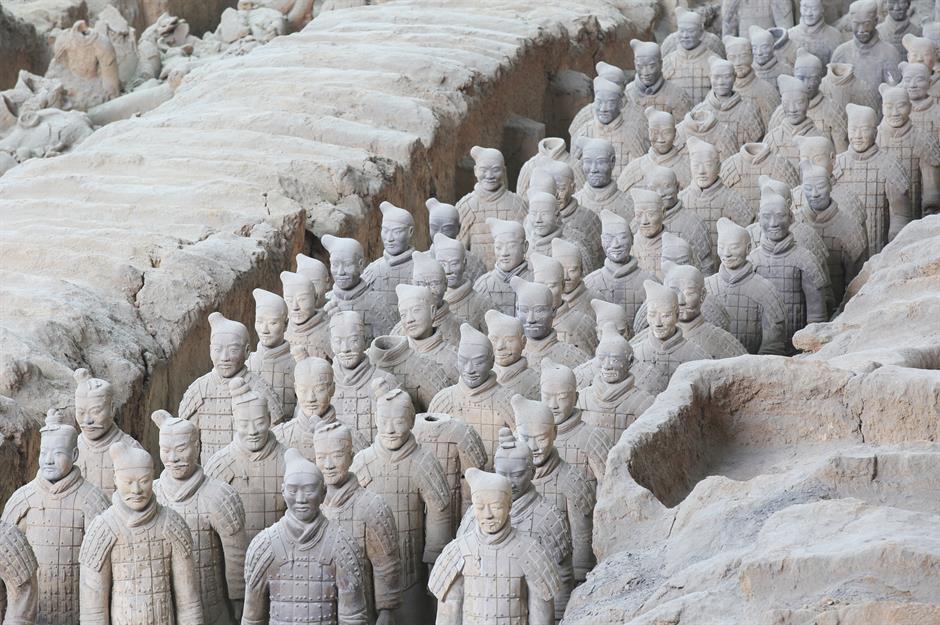
China is home to one of the world’s oldest civilisations and is rich in extraordinary and ancient treasures. Perhaps none more so than the entire army of terracotta warriors and horses that were buried with First Emperor Qin for more than 2,000 years before their excavation. The incredibly life-like army can now be seen at a museum which was built around the excavation site near Xi'an in central China.
Great Wall of China
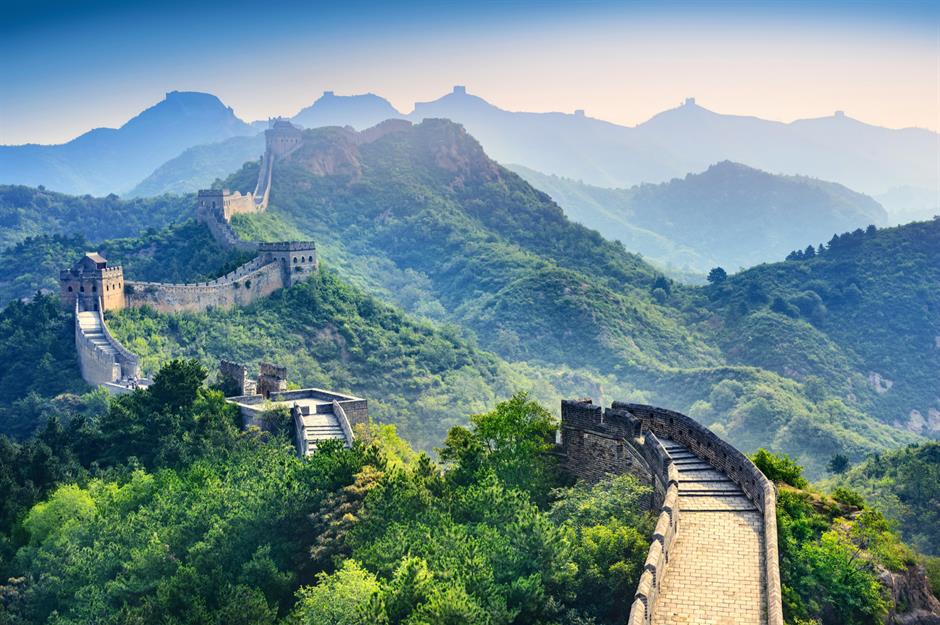
Another legacy from the Qin dynasty, which lasted only from 221–207 BC, is China's most famous landmark – the mighty Great Wall of China. Emperor Qin ordered several existing walls to be joined together and extended with watchtowers to protect his new empire from marauding tribes. Although little remains of these original fortifications, the frontier was extended over the centuries to become one of the most impressive engineering and architectural feats in history.
Easter Island
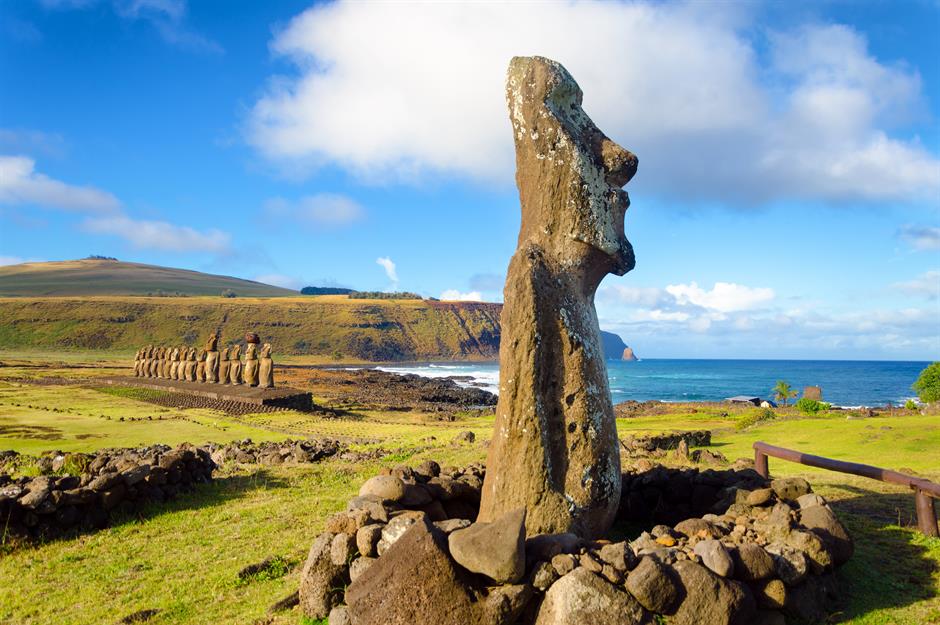
Another of the world's most enigmatic and intriguing civilisations is the Rapa Nui, who settled on a far-flung Pacific island after arriving from Polynesia around AD 300. The island took their name, although it's now known as Easter Island, yet how they voyaged to this remote part of the world is a mystery. As is exactly how they carved and transported the 900-plus massive statues, known as Moai, around the island.
Easter Island
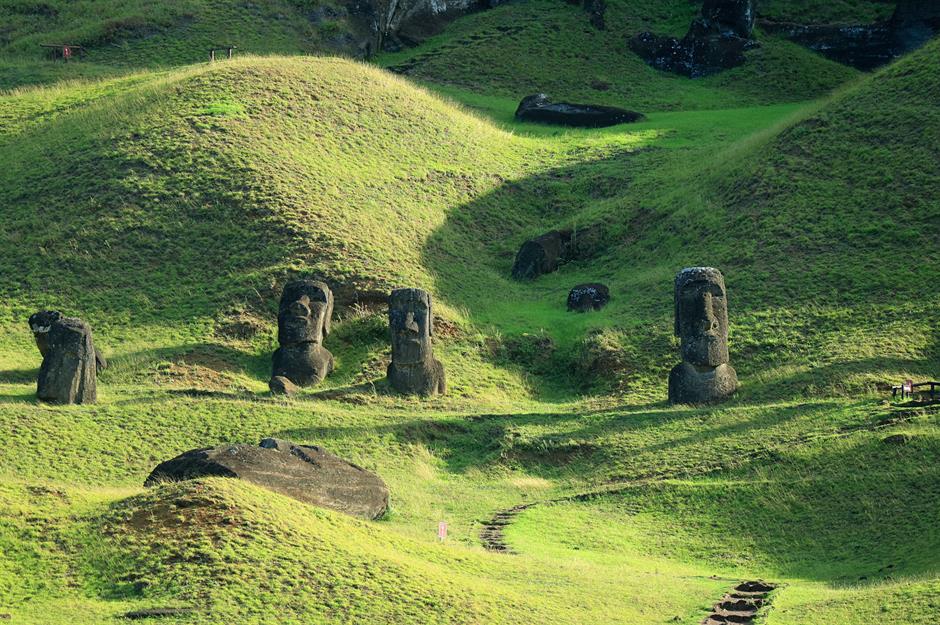
The distinct figures, with their disproportionately giant heads, are thought to honour the Rapa Nui people's ancestors. They are made out of volcanic rock, which was quarried on the island, and reach an average height of 13 feet (4m). They mostly face inland, which is thought to signal guardianship of the land. Bizarrely, by the 18th century all the Moai had been toppled over. Some sources suggest it was due to a civil war or as a protest by the islanders following the arrival of Europeans. They've since been restored.
Troy, Turkey
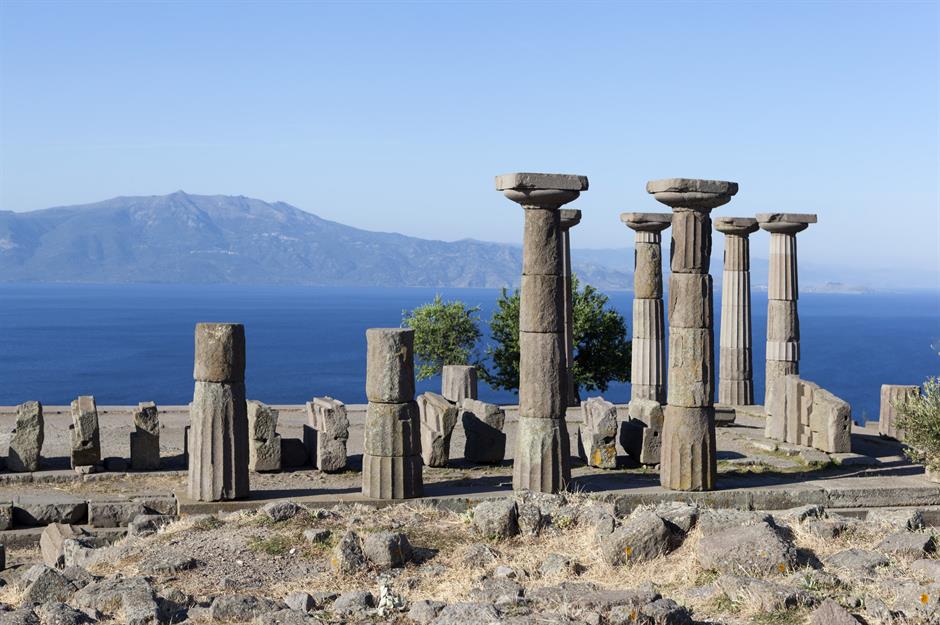
One of the most famous ancient cities in the world, thanks to its immortalisation by Greek poet Homer in the Iliad, Troy is one of Turkey’s many historic treasures. Though made famous by the Greeks, the extraordinarily ancient site in northwestern Anatolia has a history that reaches back over 4,000 years. Archaeologists have discovered clues that the site has been home to numerous civilisations.
Ephesus, Turkey
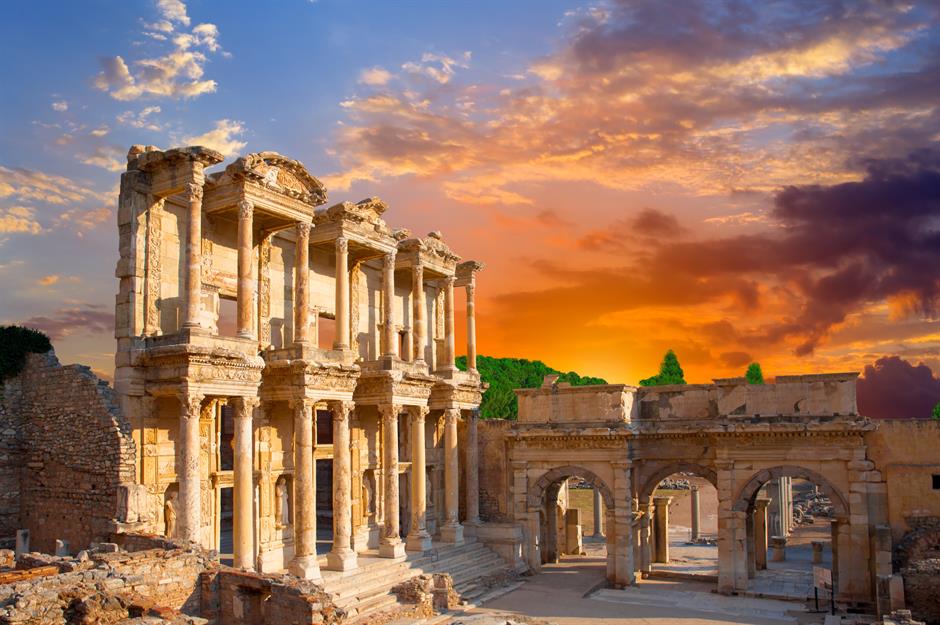
Ephesus was once one of the wealthiest and most important cities in the Greco-Roman world. Set near the modern town of Selcuk in western Turkey, the ruins of this absorbing site include an elaborate library (pictured), theatre and Curetes Street, which is lined with triumphal arches and crumbling statues. The city was famed in the ancient world for its enormous Temple of Artemis, which was one of the seven wonders of the world. Now only the foundations remain.
Now discover 60 of the world's must-see wonders and how to explore them
Comments
Be the first to comment
Do you want to comment on this article? You need to be signed in for this feature